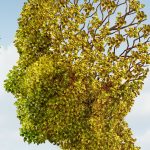Dementia Part II: Non-Prescription Symptom Management
When considering a treatment plan for Alzheimer’s Dementia, there are several ways to manage symptoms without rushing to medication. Because some common side effects of many Alzheimer’s medications include nausea, vomiting, loss of appetite and increased bowel movement frequency, prescribing medication should be considered after some non-prescription measures have been exhausted.
If a patient struggles with incontinence, simply scheduling toileting activity or prompting toileting can help mitigate incontinence. Providing assistance with daily living activities can alleviate the frustration a patient may have performing routine tasks that used to be easier. Ensuring a calm environment also can help. Structuring a calm environment could include positive reinforcement to increase independence or decrease dependence. Having a calm demeanor around the patient also can help, and even using music during meals and bathing can help trigger feelings of peace and curb aggression.
Avoid confrontation as much as possible, and use redirection to help a patient focus on something positive instead of getting into an argument with them. If a patient has a hallucination, don’t dispute what they are seeing. Try to redirect them instead or deflect it with humor. Stimulate family presence with video or audio tapes, and the use of pet therapy also can help provide a calming effect.
Bright light and white noise also can help calm a dementia patient’s demeanor. Walking and light exercise can help on multiple levels as well.
Above all, maintain a calm demeanor around a patient struggling with the onset of Alzheimer’s Dementia. Speak at a patient’s comprehension level and use a caregiver support group to help rejuvenate your own spirit as you walk alongside a loved one through this often dark and frightening journey.




